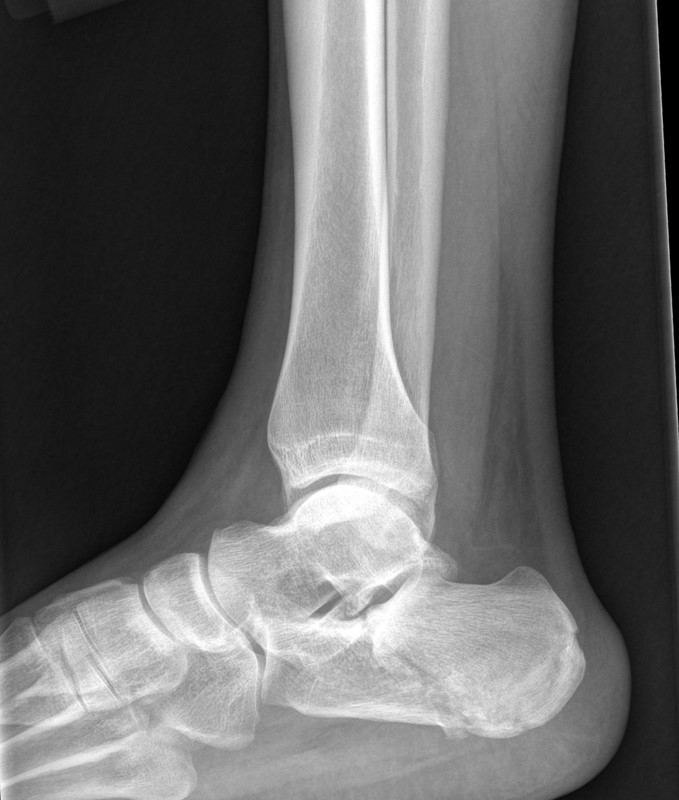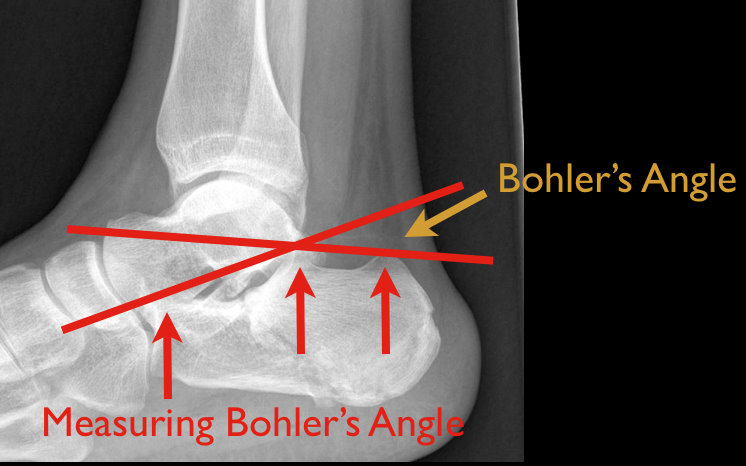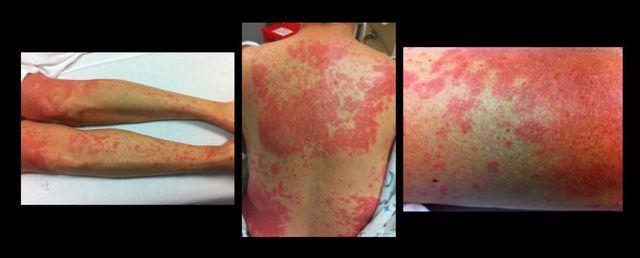Category: Cardiology
Keywords: phenylephrine (PubMed Search)
Posted: 7/17/2011 by Amal Mattu, MD
(Updated: 12/6/2025)
Click here to contact Amal Mattu, MD
With recent national shortages of norepinephrine, our typical go-to drug in sepsis, it's become important for us all to familiarize ourselves with alternative pressors in this setting. Phenylephrine is a commonly chosen alternative.
Phenylephrine is a potent alpha-agonist associated with peripheral vasoconstriction. It has no beta effects so it is not associated with tachydysrhythmias. On the other hand, it is associated with reflex bradycardia which can be treated or prevented with atropine (although there are no specific recommendations to routinely administer atropine prophylactically). Phenylephrine may take 10 minutes to demonstrate an effect, and its duration is approximately 15 minutes. It should be used cautiously in patients with underlying cardiac disease because of the vasoconstrictive effect, and it should be avoided in patients with narrow-angle closure glaucoma.
Extravasation can cause tissue necrosis and should be treated with phentolamine.
Category: Infectious Disease
Keywords: C. Diff Colitis (PubMed Search)
Posted: 7/16/2011 by Michael Bond, MD
(Updated: 12/6/2025)
Click here to contact Michael Bond, MD
C. Diff Colitis
The general treatment recommendations for C. Diff Colitis are to place the patient on PO metronidazole and if they fail this treatment PO vancomycin (125 mg 4x day). Vancomycin is generally reserved for resistant cases due to the fear that it could induce Vancomycin resistant enterococcus.
For severally ill patients it is recommended that you prescribe IV metronidazole and PO vancomycin when they are not actively vomiting. Remember there is no role for IV vancomycin as it does not get into the bowel lumen to eradicate the infection.
There is some great news though, the FDA recently approved a new drug, a macrolide antibiotic fidaxomicin (Dificid), for the treatment of C. Diff Colitis. Fidaxomicin was found to be as effective as vancomycin in preventing recurrence 3 weeks after treatment. Currently it is recommended that fidaxomicin be reserved for cases where patients are having recurrences after 3 weeks of vancomycin treatment.
The FDA news release can be found at http://www.fda.gov/NewsEvents/Newsroom/PressAnnouncements/ucm257024.htm
Category: Pediatrics
Keywords: Enterovirus, infant, CSF (PubMed Search)
Posted: 7/15/2011 by Mimi Lu, MD
(Updated: 7/22/2011)
Click here to contact Mimi Lu, MD
Now that summer is in full swing, the question is: Should the evaluation of the febrile young infant change during the summer and fall months? And can that affect length of hospitalization and antibiotic use?
Two retrospective cohort studies from the Children’s Hospital of Philadelphia (CHOP) suggest yes! The addition of enterovirus polymerase chain reaction (PCR) testing to cerebrospinal fluid (CSF) may improve the care of infants with fever during enterovirus season (early June through late October).
Of note, at CHOP: 1) infants 56 days or younger routinely undergo lumbar puncture during evaluation for fever. 2) Most CSF enterovirus PCR test results (90%) were available within 36 hours; 95% of results were available within 48 hours.
In the King study, having positive enterovirus PCR CSF results decreased the length of hospitalization and the duration of antibiotic use for young infants less than 90 days, supporting the routine use of this test during periods of peak enterovirus season. In multivariate
analysis, a positive CSF enterovirus PCR result was associated with a 1.54-day decrease in the length of stay and a 33.7% shorter duration of antibiotic use.
Bottom line: Consider adding enterovirus PCR testing to CSF obtained during the evaluation of febrile young infants during enterovirus season, as this may reduce length of hospitalization and duration of antibiotic use. The effects, however, may be limited at institutions with slower lab turnaround times.
References:
1) King RL, Lorch SA, Cohen DM, Hodinka RL, Cohn KA, Shah SS. Routine cerebrospinal fluid enterovirus polymerase chain reaction testing reduces hospitalization and antibiotic use for infants 90 days or younger. Pediatrics. 2007 Sep;120(3):489-96. http://pediatrics.aappublications.org/content/120/3/489.full.pdf
2) Dewan M, Zorc JJ, Hodinka RL, Shah SS. Cerebrospinal fluid enterovirus testing in infants 56 days or younger. Arch Pediatr Adolesc Med. 2010 Sep;164(9):824-30.
Category: Toxicology
Keywords: levamisole, cocaine, vasculitis, agranulocytosis, heroin (PubMed Search)
Posted: 6/23/2011 by Bryan Hayes, PharmD
(Updated: 7/14/2011)
Click here to contact Bryan Hayes, PharmD
Levamisole is an antihelminthic agent used in humans to treat certain parasitic infections and cancers. It is more commonly used for veterinary purposes. It has recently seen increasing use as a cutting agent for cocaine and heroin, found in up to 70% of cocaine sample seized by the DEA. It adds bulk and weight to powdered cocaine and is even theorized to increase the stimulant effects.
Toxicity of levamisole includes agranulocytosis and vasculitis (see attached document for recent image from NEJM).
Trivia: Levamisole was found in DJ AM and Andrew Koppel (Ted Koppel’s son), who both died of drug overdoses.
Category: Neurology
Keywords: ms, multiple sclerosis, plasmapharesis (PubMed Search)
Posted: 7/13/2011 by Aisha Liferidge, MD
(Updated: 12/6/2025)
Click here to contact Aisha Liferidge, MD
(1) immunomodulatory therapy for the underlying immune disorder, often with high dose
intravenous (IV) steroids which speeds recovery, and
(2) management of symptoms through supportive measures and amelioration of risk factors
associated with precipitating acute exacerbations such as infection through aggressive use
of antibiotics. Treatment of fever with antipyretics also key as even small increases in
temperature can significantly affect conduction through partially demyelinated fibers.
Category: Critical Care
Posted: 7/12/2011 by Mike Winters, MBA, MD
Click here to contact Mike Winters, MBA, MD
Hemodynamic Optimization in the Post-Arrest Patient
Stub D, Bernard S, Duffy SJ, Kaye DM. Post cardiac arrest syndrome: a review of therapeutic strategies. Circulation 2011; 123:1428-1435.
Category: Visual Diagnosis
Posted: 7/10/2011 by Haney Mallemat, MD
(Updated: 8/28/2014)
Click here to contact Haney Mallemat, MD
48 year old male following 15 foot fall onto both feet. What is the diagnosis?
…and why is it called the “Lover’s Fracture”?

Answer: Calcaneus fracture; historically called the “Lover’s Fracture” for “lovers” jumping out of bedroom windows to evade suspicious spouses and landing directly on their feet.
Calcaneus fractures

Rosen's Emergency Medicine: Online Edition
Follow me on Twitter @criticalcarenow
Category: Cardiology
Keywords: non-invasive ventilation, CHF, congestive heart failure, pulmonary edema (PubMed Search)
Posted: 7/10/2011 by Amal Mattu, MD
(Updated: 12/6/2025)
Click here to contact Amal Mattu, MD
There has been some controversy regarding the actual clinical benefit of non-invasive ventilation (NIV) for patients with cardiogenic pulmonary edema in recent years. However a recent Cochrane review has confirmed the benefit of NIV for these patients. Early (ED) use of NIV is associated with a decrease in both intubation rates and mortality. The NNT to prevent one intubation is 8, and the NNT to prevent one hospital mortality is 13. To put this in perspective, the NNT for NIV to prevent death in patients with cardiogenic pulmonary edema is lower than the NNT for thrombolytics to prevent death in acute MI.
One key point to remember is that it MUST be used early! If you wait until your patient is decompensating, it is often too late. Start the NIV as soon as possible in these patients.
Seupaul RA. Should I consider treating patients with acute cardiogenic pulmonary edema with noninvasive positive-pressure ventilation? Ann Emerg Med 2010;55:299-300.
Category: Orthopedics
Keywords: Electrolyte abnormalities, marathon runners, troponin (PubMed Search)
Posted: 7/9/2011 by Brian Corwell, MD
(Updated: 12/6/2025)
Click here to contact Brian Corwell, MD
Emergency physicians are often called upon to provide event coverage for marathons.
Prolonged endurance racing is safe for the majority of participants.
Hyponatremia (8.2% - 13.5%) - finishing times of greater than 4 hours is an independent risk factor
Hypokalemia – uncommon
Renal function – BUN > 30 or Cr > 1.4 mg/dL (23.6%). There is no data that this is of any clinical significance.
Cardiac Troponin - (11%) had significant increases (troponin T > or = 0.075 ng/mL or troponin I > or = 0.5 ng/mL). Elevations were more commonly seen with weight loss and increased Cr levels and may be associated with running inexperience (< 5 previous marathons) and young age (< 30 years) though interestingly not with race duration or traditional cardiac risk factors.
Findings are similar for men and women
Cardiac troponin increases among runners in the Boston Marathon.
.Ann Emerg Med. 2007 Feb;49(2):137-43
Prevalence of Hyponatremia, Renal Dysfunction, and Other Electrolyte Abnormalities Among Runners Before and After Completing a Marathon or Half Marathon
Sports Health 145 - 151.
Category: Pediatrics
Posted: 7/8/2011 by Rose Chasm, MD
Click here to contact Rose Chasm, MD
Category: Toxicology
Keywords: caffeine, arrhythmias, cardiac (PubMed Search)
Posted: 7/7/2011 by Ellen Lemkin, MD, PharmD
(Updated: 12/6/2025)
Click here to contact Ellen Lemkin, MD, PharmD
Animal studies show high doses of caffeine produces catecholamine triggered activity
Small studies in high risk patients (recent MI, malignant arrhythmias) have shown no increase in frequency or severity of arrhythmia
No large scale human studies exist evaluating caffeine's effects on patients with malignant arrhythmias (VF/VT)
Overall, the data suggest that caffeine is well tolerated in moderate doses in most patients, even those with known or suspected arrhythmias
In patients who claim sensitivity to caffeine, or in those with known arrhythmias where catecholamines are felt to drive the arrhythmia, caffeine may be discouraged by physicians.
Category: Neurology
Keywords: stroke, TIA (PubMed Search)
Posted: 7/6/2011 by Aisha Liferidge, MD
(Updated: 12/6/2025)
Click here to contact Aisha Liferidge, MD
Category: Airway Management
Keywords: thyroid, hyperthyroid, hypothyroid, amiodarone (PubMed Search)
Posted: 7/5/2011 by Haney Mallemat, MD
Click here to contact Haney Mallemat, MD
Amiodarone is a class III anti-arrhythmic for tachyarrhythmias
Although most patients remain euthyroid on amiodarone, 4-18% develop thyroid disease months to years after exposure.
Amiodarone-induced thyroid disease occurs because amiodarone is structurally similar to triiodothyronine and thyroxine and each 200mg tablet contains 75 mg of iodine.
Two types of amiodarone-induced thyroid disease:
Amiodarone-induced hypothyroidism (AIH)
Amiodarone-induced thyrotoxicosis (AIT)
Padmanabhan H. Amiodarone and Thyroid Dysfunction. South Med J. 2010 Sep; 103 (9): 922-30
Follow me on Twitter @criticalcarenow
Category: Cardiology
Keywords: right ventricular infarction, tamponade, tension pneumothorax, pulmonary embolism (PubMed Search)
Posted: 7/3/2011 by Amal Mattu, MD
(Updated: 12/6/2025)
Click here to contact Amal Mattu, MD
DDx for JVD + hypotension + clear lungs:
RV infarction
massive PE
tension PTX (clear lung)
pericardial tamponade
Assuming your physical exam diagnoses tension PTX, you only need two simple tests to make the diagnosis amongst the other possibilities:
1. EKG: RV infarction will almost always show a concurrent inferior MI;
2. bedside U/S: tamponade patients have effusion, PE patients have RV distension
Category: Pharmacology & Therapeutics
Keywords: argatroban, direct thrombin inhibitor, heparin, HIT (PubMed Search)
Posted: 6/6/2011 by Bryan Hayes, PharmD
(Updated: 7/2/2011)
Click here to contact Bryan Hayes, PharmD
Patients requiring anticoagulation for HIT or with a history of HIT may be initiated on argatroban. We have recently been seeing increased utilization. Here are some important points to remember.
Category: Pediatrics
Posted: 7/1/2011 by Rose Chasm, MD
(Updated: 12/6/2025)
Click here to contact Rose Chasm, MD
Category: Toxicology
Keywords: lipid emulsion,intralipid,verapamil (PubMed Search)
Posted: 6/30/2011 by Fermin Barrueto
Click here to contact Fermin Barrueto
The mounting evidence on the use of 20% lipid emulsion or intrlipid has been growing for any patient that is hemodynamically unstable due to a drug exposure. There is now a recent case report of a verapamil overdose patient that received intralipid and did well. They were able to measure verapamil levels before and after administration. They were able to remove the lipid from the serum to appropriately measure the level and found effective removal. This adds to the theory of the "lipid sink" where the lipid actually is binding/surrounding a lipophilic molecule effectively removing it from interaction.
Category: Neurology
Keywords: aspirin, acute ischemic stroke, stroke (PubMed Search)
Posted: 6/29/2011 by Aisha Liferidge, MD
(Updated: 12/6/2025)
Click here to contact Aisha Liferidge, MD
Category: Critical Care
Posted: 6/28/2011 by Mike Winters, MBA, MD
(Updated: 12/6/2025)
Click here to contact Mike Winters, MBA, MD
Hepato-Renal Syndrome
Bagshaw SM, Bellomo R, Devarajan P, et al. Review article: Acute kidney injury in critical illness. Can J Anesth 2010; 57:985-998.
Category: Visual Diagnosis
Posted: 6/27/2011 by Haney Mallemat, MD
Click here to contact Haney Mallemat, MD
49 y.o. female on Trimethoprim/sulfamethoxazole presents with rash and oral mucus membrane lesions. Diagnosis?

Answer: Steven-Johnson Syndrome
French LE. Toxic epidermal necrolysis and Stevens Johnson syndrome: our current understanding. Allergol Int. Mar 2006;55(1):9-16
Schöpf E. Toxic epidermal necrolysis and Stevens-Johnson syndrome. An epidemiologic study from West Germany. Arch Dermatol. 1991;127(6):839.
Roujeau JC. Severe adverse cutaneous reactions to drugs. N Engl J Med. 1994;331(19):1272.
Follow me on Twitter @criticalcarenow
